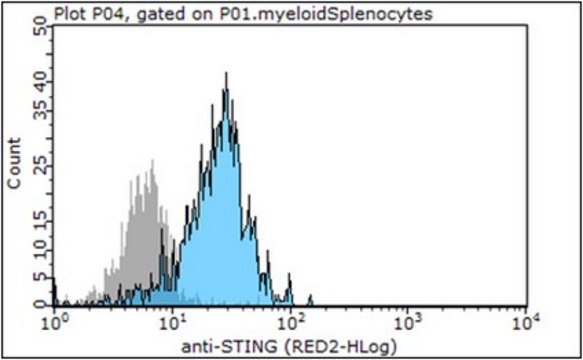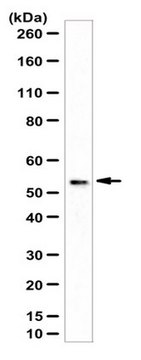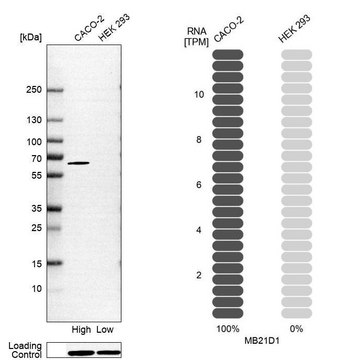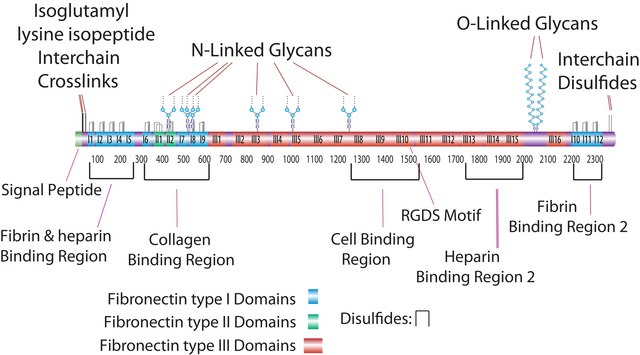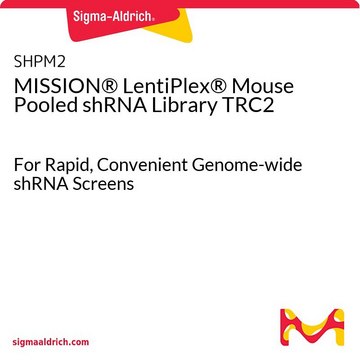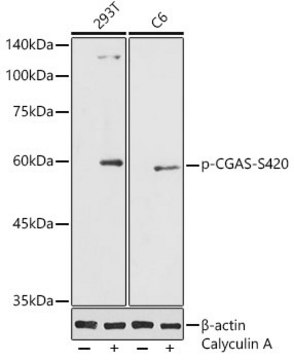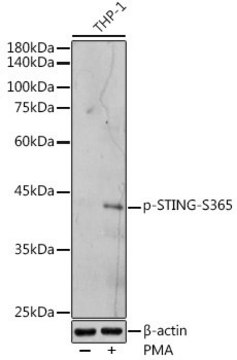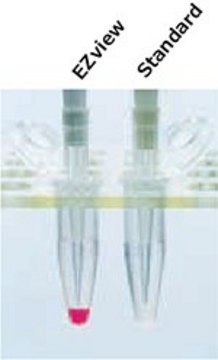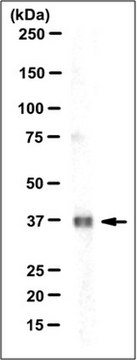MABF270
Anti-STING Antibody, clone S17G2C4B7
clone S17G2C4B7, from mouse
Synonym(s):
Stimulator of interferon genes protein, Endoplasmic reticulum interferon stimulator, ERIS, hMITA, hSTING, Mediator of IRF3 activation, Transmembrane protein 173
About This Item
Recommended Products
biological source
mouse
Quality Level
antibody form
purified antibody
antibody product type
primary antibodies
clone
S17G2C4B7, monoclonal
species reactivity
mouse, human
technique(s)
immunocytochemistry: suitable
western blot: suitable
isotype
IgG1κ
NCBI accession no.
UniProt accession no.
shipped in
wet ice
target post-translational modification
unmodified
Gene Information
human ... TMEM173(340061)
General description
Specificity
Immunogen
Application
Inflammation & Immunology
Infectious Diseases - Viral
Immunocytochemistry Analysis: A 1:50 dilution from a representative lot detected the expression of exogenously transfected human and murine STING in HEK293T cells, as well as the endogenous STING in telomerase-immortalized human foreskin fibroblasts hTERT-BJ1 (Courtesy of Dr. Glen N. Barber, University of Miami School of Medicine, FL, U.S.A.).
Quality
Western Blotting Analysis: 1.0 µg/mL of this antibody detected STING in 50 µg of HEK293T cell lysate.
Target description
Physical form
Storage and Stability
Other Notes
Disclaimer
Not finding the right product?
Try our Product Selector Tool.
Storage Class Code
12 - Non Combustible Liquids
WGK
WGK 1
Flash Point(F)
Not applicable
Flash Point(C)
Not applicable
Certificates of Analysis (COA)
Search for Certificates of Analysis (COA) by entering the products Lot/Batch Number. Lot and Batch Numbers can be found on a product’s label following the words ‘Lot’ or ‘Batch’.
Already Own This Product?
Find documentation for the products that you have recently purchased in the Document Library.
Our team of scientists has experience in all areas of research including Life Science, Material Science, Chemical Synthesis, Chromatography, Analytical and many others.
Contact Technical Service